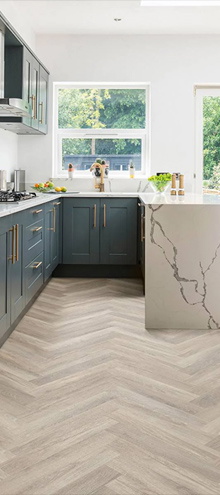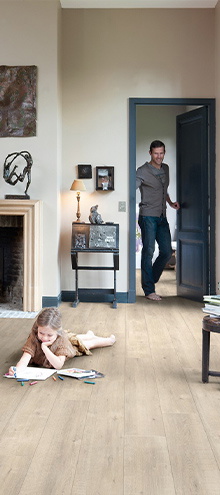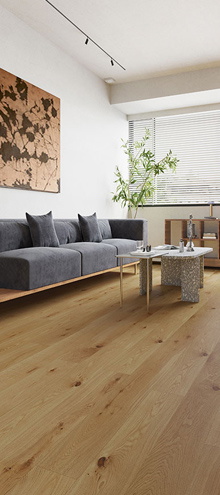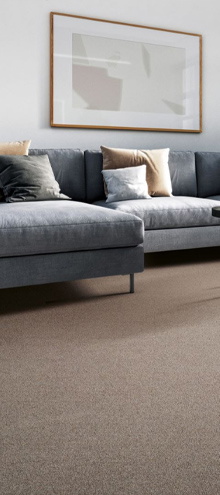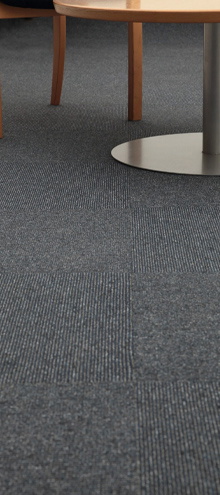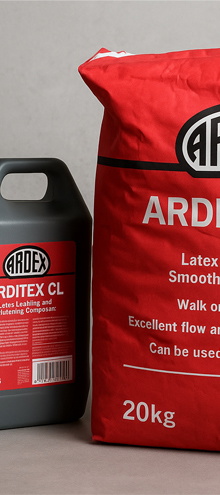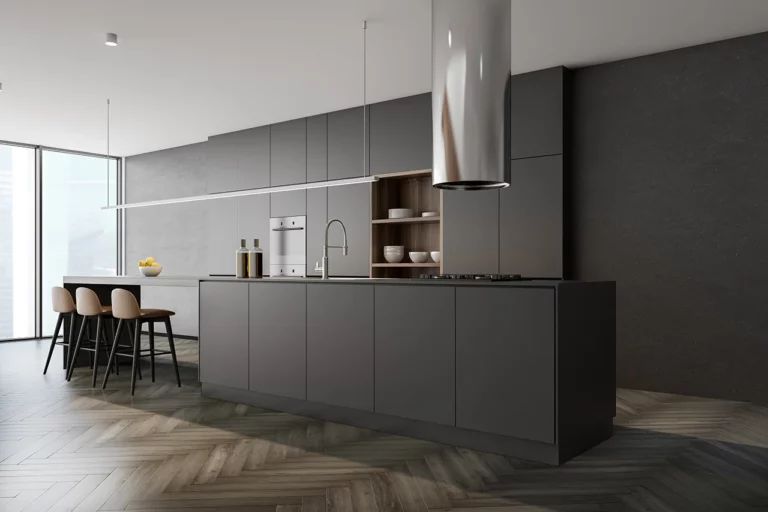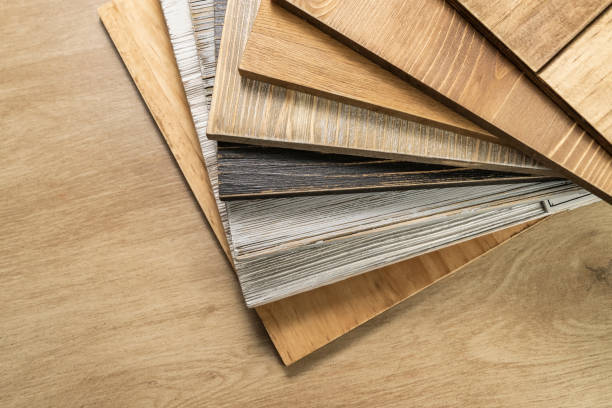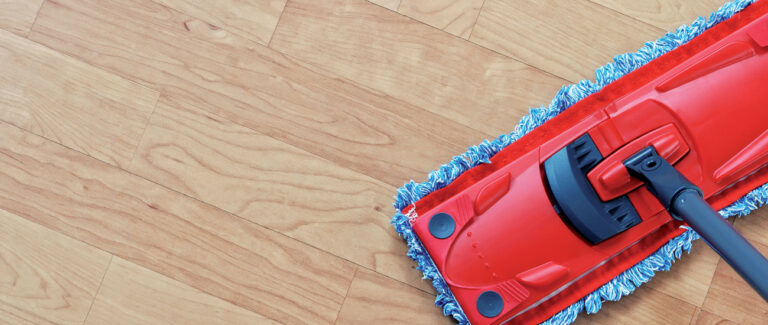A popular flooring choice for older and modern homes alike, there are plenty of reasons why you might opt for installing engineered wood flooring throughout your house. From its enhanced durability to its real-wood aesthetic, there’s a lot that this material can bring to the table, including a stunning set of finishes that can help complete your home’s look!
Consisting of oiled and lacquered coats that come in matt and sheen varieties, there are loads of advantages to getting your engineered floors finished, which begs the important question – how do you choose between getting oiled vs lacquered engineered wood flooring?
Well, to help make the decision easier, we’ve broken down everything you need to know about selecting lacquered or oiled engineered wood, including tips around maintenance and what rooms each finish is best suited for.
Take a look below to get started on your research!
What is oiled engineered wood?
Offering a traditional and organic finish for your engineered wood floor, an oiled finish on your wooden planks is perfect for enhancing their natural warmth and homely feel. Applied straight onto each board’s wood core, the oil soaks directly into wood fibres, highlighting their rings and grain so that they stand out against the rest of your room.
An oiled engineered wood finish like this is all about delivering an authentic appearance that directly replicates the real hardwood floors of older buildings, helping you to capture that rustic appeal and sturdy impression that these floors are associated with.
What is lacquered engineered wood?
Considered the modern-day equivalent of varnish, lacquered engineered wood puts protection and shine at the front and centre of your floor, delivering a satin quality finish that can light up a room while helping to protect your new boards against the scuffs and scrapes caused by everyday life.
With a lacquered finish, you’re essentially applying an additional protective layer to your engineered wood boards. Rather than sinking in, it sits atop your planks, making them exceptionally hard-wearing and long-lasting.
What’s the difference between oiled vs lacquered engineered wood?
Now we’ve briefly explained the differences between the two, it’s time to go through the advantages and disadvantages of each, so you can better choose the one that’s right for you.
Oiled engineered wood advantages and disadvantages
Starting with oiled engineered wood first, this sort of finish brings with it several key advantages over lacquered alternatives:
- Ages well – with its natural aesthetic being enhanced by the oil soaking into the wood, oiled boards tend to age well, looking great for years to come and potentially indirectly increasing the value of your home.
- Easy to repair – it’s typically much easier to spot scuffs and scratches on an oiled wood floor, all of which can be fixed with either a fresh oil coat or a quick clean.
- Good grip – thanks to the nature of an oil finish, oiled wood planks tend to have better floor grip than lacquered boards, making them less slippery to walk on.
- High re-finish potential – unlike a lacquered finish, oiled engineered wood can be refinished several times before needing to have the coat reapplied or a board replaced.
- Allergy-friendly – due to the anti-static nature of oil, most oiled engineered wood floors will repel dust, making them a fantastic hypo-allergenic floor choice.
However, while there’s a lot to love about oiled floors, they do come with a few important disadvantages:
- Regular re-finishing – although oiled engineered wood has a high re-finish potential, you’ll likely find you need to reapply the oil coat at least once a year or possibly every six months, especially if you install an engineered wood floor in a high-traffic area.
- Lower protection – oiled engineered wood does have a high level of protection against regular wear and tear. However, lacquered planks tend to have better durability in the long run.
- Higher price – while the price difference between lacquered or oiled engineered wood finishes isn’t much, an oiled finish does tend to be slightly more expensive overall.
Lacquered engineered wood advantages and disadvantages
Much like oiled engineered wood, a lacquered wood finish comes with plenty of advantages that make it a great choice for use in your home:
- Long-lasting – due to its thicker nature, lacquered wood planks tend to have better longevity than oiled wood, with some lacquered floors not requiring a re-finish for upwards of a decade or more.
- Good resistance – all engineered wood has a good level of stain, water, and spill resistance, but a lacquered finish will give you the best protection possible out of all finish options.
- Easy maintenance – the protective barrier created by a lacquered finish makes an already easy-to-maintain floor even simpler to keep clean, with lacquered engineered wood flooring care being a straightforward process compared to oiled planks.
Of course, a lacquered finish does have its own disadvantages to consider:
- Scratches and scuffs – although a lacquered floor is arguably tougher than an oiled finish, scratches and scuffs are often more noticeable with this finish and harder to hide by cleaning alone.
- Slippery – as gorgeous as a sheen finish can look on wood floors, this sort of satin coating has a habit of making wooden boards slipperier underfoot, making them a bad idea for areas that might get wet.
- Costly re-finish – while lacquered tiles may not need a full re-finish till several years down the line, should you damage them, you will need to re-finish them sooner or replace the boards entirely to hide such marks, depending on how bad the damage is.
What to consider when choosing between lacquered or oiled engineered wood
As you can see, both oiled and lacquered engineered woods have a lot to offer your home. So, what key areas should you consider when picking between the two of them?:
- Room choice – when it comes to room choice, there are definitely certain rooms in your home that are better suited to one finish or the other. For example, lacquered woods are great for hallways, kitchens, and dining rooms thanks to their hard-wearing nature. Meanwhile, oiled floors are good for bedrooms and living spaces where foot traffic is less intense and the grain finish can really stand out on its own.
- Aesthetic appearance – an obvious consideration but one that shouldn’t be overlooked, your current home décor will play a role in determining which finish will be more suitable for your interior. For example, oiled boards are considered more traditional in appearance, while lacquered offer a more contemporary glow. However, it’s certainly possible to swap these around, and it will come down to personal preference as to which one you prefer.
- Maintenance – lastly, although engineered wood floors are easy to maintain in general, oiled engineered wood floor maintenance requires a little more effort to carry out than that for lacquered planks, making a lacquered engineered wood floor slightly easier to look after.
Browse our full engineered wood range
Hopefully, you should now have a good idea of the differences between oiled and lacquered engineered wood finishes, and which might be better suited for installation in your home.
Of course, there’s nothing stopping you from using both types of finish in your home for different rooms, and we have both oiled and lacquered planks in our range. Why not start browsing our engineered wood collection today and take advantage of our click-finish wood planks for easy laying?
Or, if you’re searching for more tips around common home flooring such as how to remove water stains from engineered wood or more information on what engineered wood is, you can browse our flooring guide hub for similar articles to this one.

